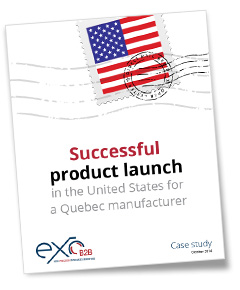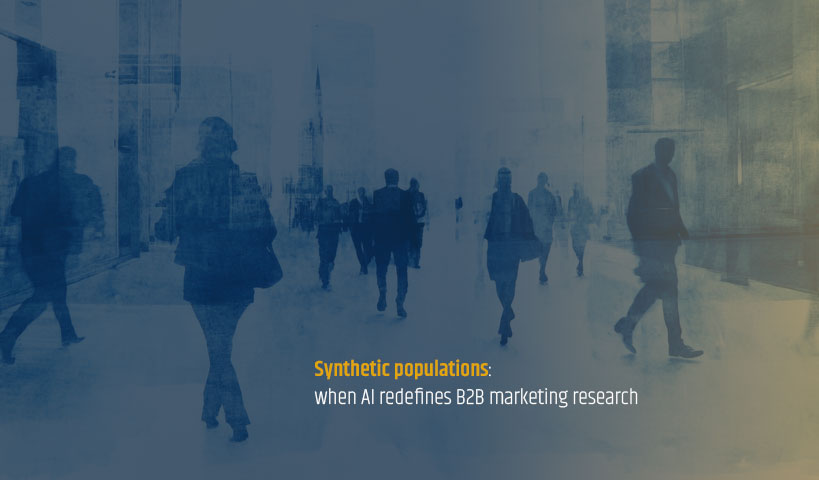
The illusion of instantaneous credibility
Do you really validate every B2B statistic you share, which increasingly comes from generative artificial intelligence? It’s tempting, we know. In a matter of seconds, a text is written, structured and supported by figures that give a rigorous look to the subject. The whole thing arrives neatly packaged, ready for publication. And yet… Just because a piece of data is proposed by the AI doesn’t mean it’s true. Nor does it mean it’s recent, well interpreted or from a reliable source.
Sometimes, it’s a lack of time. Other times, it’s blind faith in the tool. Or simply the effect of habit. Whatever the reason, we all too often forget one basic rule: a poorly sourced B2B statistic can do more harm than good. It’s a brutal truth, but one I feel compelled to reiterate.
B2B statistic: a disturbing observation in the midst of revision
Recently, while revising a blog post, we came across an observation that stopped us dead in our tracks. Out of eight statistics proposed by the artificial intelligence tool, only two were accurate and traceable. The other six? It was a festival of broken links, untraceable sources and figures used out of context. And it wasn’t the first time this had happened to us. In fact, it’s become the norm. With each new revision of AI-generated text, we find errors, sometimes major ones.
Out of curiosity and, let’s face it, a certain professional reflex, we also explored some content published by other firms in our field. Nothing scientific, of course, but revealing enough. Here too, many statistics are presented as facts. Yet when we try to track them down, we hit a brick wall. No clear source, often not even an active link, or an old study presented as a current truth. In short, nothing we can reasonably use to inform a decision.
When inaccuracy creeps into decisions
And this is precisely where the problem becomes serious. Because in a B2B context, our content – be it blog posts, newsletters, white papers or case studies – isn’t just a stylistic exercise. It’s serious content. It’s content patiently built on veracity and relevance. They provide food for thought, influence choices and guide strategies.
What is the risk of using an inaccurate statistic in B2B content?
An inaccurate B2B statistic, even slipped into an innocuous paragraph, can distort perceptions, give false assurance or skew planning. In the long term, it’s our credibility and the reader’s trust that suffer.
Citing data without validating it is a bit like building a demonstration on sand, and contributing to the growth of statistical myths… (That’s a quote from me. Not from AI 🙂 )
The recipe for reliable B2B statistics
How do you know if an AI-generated statistic is reliable?
I answer this question by saying that it’s a combination of factors that contribute to its reliability. First of all, it’s an explicit source, which you can consult, verify and understand the context of. And above all, it’s data anchored in time. A study published in 2020 doesn’t have the same relevance today, especially in a world where B2B behaviors evolve as fast as the technologies that influence them. And as mentioned earlier, the fact that several sources quote the statistic does not certify its veracity.
At ExoB2B, we’ve made the choice to take our time. Check every piece of data. Follow every link. Confirm every source. This is not perfectionism, nor is it an elitist stance. It’s simply what we consider the minimum acceptable when we claim to produce quality content, in an industry where expertise can’t be decreed, it has to be demonstrated..
Read B2B statistics with a trained eye
So the next time you come across a statistic like: “93% of B2B buyers…”, ask yourself a few simple questions:
- Is the methodology available?
- Does the link work?
- Is the study recent?
If you can’t answer yes to these three questions, it’s best to refrain from repeating it. Because feeding a myth, even if unintentionally, won’t do you any favors. And while myths have their place in children’s stories, they have no place in a serious, responsible B2B strategy.
But also, I’d like to say that it’s legitimate to wonder whether artificial intelligence invents statistics in its texts. In fact, ask it directly. The answer is:
Yes, artificial intelligence can invent statistics in its texts.
“This phenomenon, sometimes referred to as a “hallucination” in natural language processing, occurs when AI generates a number or piece of data without relying on a real source, simply because it “seems likely” or stylistically consistent in the context of the text.”
The truth is, AI doesn’t know what’s true. It predicts what is likely.
“AI predicts word sequences based on billions of analyzed texts, but it doesn’t fact-check, track sources in real time or quote rigorously as a human would. So a statistic like “93% of B2B buyers start their journey online” can be offered with aplomb, even if it’s based on an old, unverified study… or sometimes entirely fictitious.”
That’s why every figure it generates needs to be manually validated. We have to find the source, confirm its reliability and make sure the data is still current. Otherwise, there’s a risk of spreading misinformation. In a B2B context, this can have very real consequences for the quality of decisions taken.
In conclusion: vigilance, rigor… and responsibility
At a time when artificial intelligence is redefining the way we produce content, it’s tempting to rely on it to do more, faster, but not necessarily better. But in the face of this algorithmic flood, human rigor remains more essential than ever.
Why is validating sources essential in B2B marketing?
In short, a B2B statistic is never a decorative addition to a piece of content. It gives weight to our ideas, credibility to our recommendations, and sometimes, it influences concrete decisions. AI is a good but imperfect tool. And like any tool, it requires a critical eye, careful re-reading, and systematic validation of the facts it puts forward.
At ExoB2B, we’ve made this a daily practice, because we believe that good content isn’t measured by the speed with which it’s written… but by the confidence it inspires. What are your validation practices? How do you manage the integration of AI-generated data into your communications? If this topic interests you, or if you’d like to discuss your B2B marketing challenges, we’re always up for a good chat.
So write to us. And together, we’ll produce content that stands the test of time.







